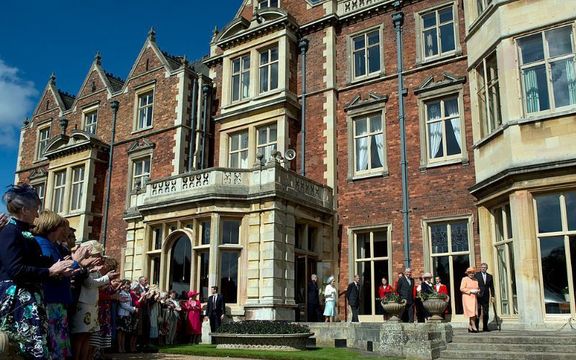
Garden Party At The Sandringham EstateGetty
Nestled amidst the picturesque landscapes of Norfolk, England, Sandringham House stands as a quintessential emblem of British royalty and aristocracy.
Its rich history, spanning centuries, intertwines with the narratives of monarchs, statesmen, and the British Royal Family, imbuing the estate with an aura of regal grandeur and historical significance.
Early History
The origins of Sandringham House trace back to the early 16th century when it was purchased by the influential aristocrat Sir William Hoste. Over time, the estate underwent several transformations, with notable architectural additions and landscaping, shaping it into the splendid country retreat it is today. In 1862, Sandringham came into possession of the British Royal Family when it was purchased by Queen Victoria's eldest son, the Prince of Wales, who later ascended to the throne as King Edward VII.
Royal Residences
Since its acquisition by the Royal Family, Sandringham House has served as a cherished retreat for generations of monarchs and their kin. King Edward VII, known for his affinity for the countryside and outdoor pursuits, adored Sandringham, making it a favored retreat for hunting, shooting, and leisurely strolls amidst its verdant gardens. His fondness for the estate set a precedent for successive generations of royals who sought solace and recreation within its tranquil environs.
Royal Family Traditions
The British Royal Family has cultivated a host of traditions and rituals during their stays at Sandringham House, particularly during the festive season. The estate plays host to the royal family's Christmas celebrations, a cherished tradition dating back to the reign of Queen Victoria. Members of the family gather at Sandringham to exchange gifts, attend church services, and partake in the joviality of the season, away from the prying eyes of public scrutiny.
Modern Royal Residents
In recent times, Sandringham House has been frequented by various members of the modern British Royal Family. The late Queen Elizabeth II and her consort, Prince Philip, Duke of Edinburgh, spent many private moments at Sandringham, relishing the tranquility and seclusion it offered. King Charles shares a particular affinity for Sandringham, drawn to its historical charm and serene ambiance. His visits often involve engagements with local communities, conservation efforts, and indulging in his passion for organic farming, a cause close to his heart.
Notable Features
Sandringham House boasts an array of architectural marvels and natural splendors that contribute to its allure. The estate encompasses vast woodlands, meticulously manicured gardens, and a diverse range of flora and fauna. The grandeur of the house itself, with its distinctive red brick facade, intricate detailing, and opulent interiors, serves as a testament to the wealth and prestige of its royal occupants.
King Charles's Affection
King Charles's fondness for Sandringham House can be attributed to his deep-seated appreciation for tradition, heritage, and the natural world. The estate provides him with a sanctuary away from the demands of public life, allowing him to connect with nature and pursue his interests in sustainable agriculture and environmental conservation. Moreover, Sandringham's historical significance and association with past monarchs resonate with King Charles's reverence for history and the monarchy's enduring legacy.
In essence, Sandringham House stands as more than just a royal residence; it is a living testament to centuries of British history, tradition, and the enduring bond between the Royal Family and the English countryside. Its tranquil beauty and storied past continue to captivate the hearts and minds of all who have the privilege to tread its hallowed grounds.





Comments